Management Operating Framework
As a Manager you a running a small (or large!) business area; understanding and assessing performance achievements on a daily and weekly basis will be key. However looking at not only what has been achieved, but ‘how’ is even more powerful. Taking a thorough look under the bonnet ,so to speak, is a necessary routine behaviour to enable you to understand the interplay of all your different key activities and tasks and how, combined, they allow you to drive performance and motivation within your team.
Let’s take coaching sessions as an example. An effective coaching session would be the interplay of a number of factors:
- Reviewing the previous performance, that could be yesterday, or last week, and assessing exceptions within the team and understanding which performance KPI needs improving and who needs the most support
- Observing the team member and doing quality monitoring to understand where the problem may lie in order to forecast the improvement that you will be able to make
- Planning not only when would be an optimum time to conduct the coaching session ( i.e. when other demands on your time are least likely to cause issues ensuring you are free and undistracted) but also ‘how’ the coaching session will be run in order to have the greatest impact, and finally
- Doing the coaching session itself
In order to know if your careful process of review, forecast, plan and do has had the desired impact, what would you need to do now? Do it all over again!!!
- Review results – if you have achieved the desired impact, what was it that you did that was so effective to ensure you repeat it, and if not how can you improve?
- With this information, Forecast – i.e. predict the next outcome based on the activities you are now going to
- Plan! and
- Do!
It’s a simple structured cycle of thinking and behaviour which ensures you are controlling your business, rather than your business controlling you. Of course sometimes your predictions are wrong, but by continuing the cycle you will always be able to understand root cause and make decisions to get your ‘business’ and team performance back on track.
What is it?
A Management Operating Framework (MOF) is A structured method of business management designed to maximise the output and effectiveness of the resources employed.
This is a fairly straightforward definition. The ‘structured method’ part of the definition means having an easily understood and consistent way of managing a business, avoiding ‘black arts’ and ‘gut feels’, so that the information necessary to know what’s going on and manage is readily available and easily understood.
The definition also says ‘to maximise the output and the effectiveness of the resources employed’. Effectiveness is the key word here. It is another way of saying ‘doing the right things’. It is no good doing something very efficiently if it is the wrong thing to do.
Note that part of maximising effectiveness involves minimising ineffectiveness.
Objectives of a MOF
To enable management to relate work to time for the purpose of planning and scheduling
We need to know how long the work we have, or are expecting, is going to take so we know how many people we need to get the work done in the time available.
To establish quality and performance expectations on which to monitor progress
We need to know what reasonable performance standards are and to be able to see how actual performance compares to these and if it is improving or getting worse. For example if one of your advisers is only dealing with half as much work load as your other advisors, you need to know this and be able to track this individual’s improvement as you work with them to improve their performance.
To enable management to more effectively organise, plan and assign work
This results in teams being assigned the work they are expecting and having the right resources ready to do the work i.e. the right number of people with the right skills and right equipment.
To set up the ‘management by exception’ concept
This means that Team Leaders have the information to see whether an area is running smoothly or not and only need to take action when there is a deviation from plan. They can see where and when problems are occurring and do not need to go searching for them.
To highlight hidden as well as obvious potential to improve operational performance
An example of this could be matching shift patterns better to the work distribution, resulting in improved service levels.
Benefits of a MOF
A Management Operating Framework that meets these objectives will typically give a productivity improvement of 10% to 20%, depending on the initial state of the operation.



